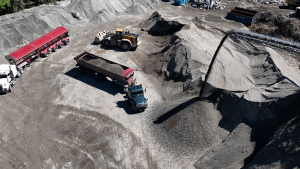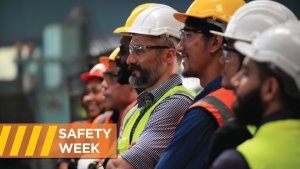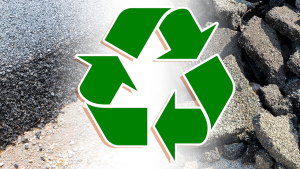Trust, sincerity, bona fides — all the initial elements appear to be in place for a successful business partnership as Makwa Development Corp. has joined forces with Cahill Constructors Ltd. to create Makwa-Cahill.
Cahill is a national multi-disciplinary construction and fabrication company with headquarters in St. John’s, N.L.
Makwa is owned by Chippewas of Nawash Unceded First Nation residents Scott Lee and Shane Chegano.
Executives from both firms discussed their hopes to make inroads in the nuclear fabrication sector during a presentation at the Ontario General Contractors Association (OGCA) Construction Symposium held in Blue Mountain, Ont. recently.
“We’ve had partnerships before with Aboriginal communities in Labrador, and throughout Newfoundland,” said panellist John Kennedy, a vice-president of operations at Cahill. “It’s about the community piece for us. We want to go into local communities. We want to build infrastructure. We want to develop the people and be able to leave there having that cornerstone of resources and people skills left so communities will continue to grow.”
Makwa-Cahill held a grand opening for its fabrication facility in Owen Sound, Ont. in October. The new facility will provide services to Bruce Power and other energy firms while providing training opportunities for such trades as millwrights, welders and sheet metal workers.
The 26,000-square-foot fabrication facility is now operational with plans to employ more than 50 workers per shift. Skills training support will come from the Aboriginal Labour Force Development Circle (ALFDC), a federal not-for-profit corporation.
Lee explained after the OGCA session that the partnership with Cahill is still in its very early days. He said besides the first contract with Bruce Power, Makwa-Cahill has lots of irons in the fire, and Makwa Development Corp. is working on several other projects including a water distribution system.
But the partners are prepared to be patient as word of the training and entrepreneurial opportunities spreads among members of the Chippewas of the Nawash Unceded First Nation and Saugeen First Nation, many of whom live off reserve.
Lee talks about the benefits accruing over seven generations, a traditional Indigenous time frame, as members recognize the opportunities and migrate back to their communities.
“We always say to our potential partners, ‘there’s not a thousand people in our community sitting there waiting to be pulled off the shelf,’ and it’s because they’re already out working. This is why this generational piece comes in and to bring the youth in, exposing them to this opportunity,” Lee said.
“In the community, just from the exposure we’ve got from this, I’ve had other people who really have no interest in being a journeyman, but to be an entrepreneur, they say, ‘I have an idea. What do you think?’”
Lee, Kennedy and fellow panellist Michael Benham, a vice-president at Cahill, stressed the need to develop a strong, trusting relationship between non-Indigenous firms and Indigenous partners because there are too many construction firms looking to “check a box” to prove they have consulted with local First Nations or hired tradespeople who are not qualified.
The term used is “rent a feather.”
“It’s insincerity,” said Lee. “Every community’s familiar with it, check the box to say, ‘Do you have an indigenous partner?’
“Where is the vetting of what experience is there? Is there really an actual business? Is there actually an office? Is there any kind of meaningful or organized organization or partnership?”
Cahill showed it has a value proposition to offer the community and that the firm would be engaged in the community, Lee said.
The first discussions were about their commitments to the community, even before they got into the business proposition.
“It was the core values of what we believed in, not only for the Indigenous communities, but the local communities that fall within our traditional territory that we wanted to create the opportunity for long-lasting, meaningful careers for people to pursue,” Lee said.
Benham said Cahill aims to develop numerous partnerships and create a centre of excellence that stimulates economic development for the region, rhyming off Trans-Canada Energy, Bruce Power, Georgian College, several building trades unions and ALFDC support.
The plan is to “create a soup to nuts approach for certain skill sets within the trades but also in the back shop,” Benham said. “If that sounds like charity, it’s something that has to be said very loudly, there’s nothing charitable about what we do.
“It’s a good business approach. That’s what’s going to make it sustainable.”
Follow the author on Twitter @DonWall_DCN.











Recent Comments